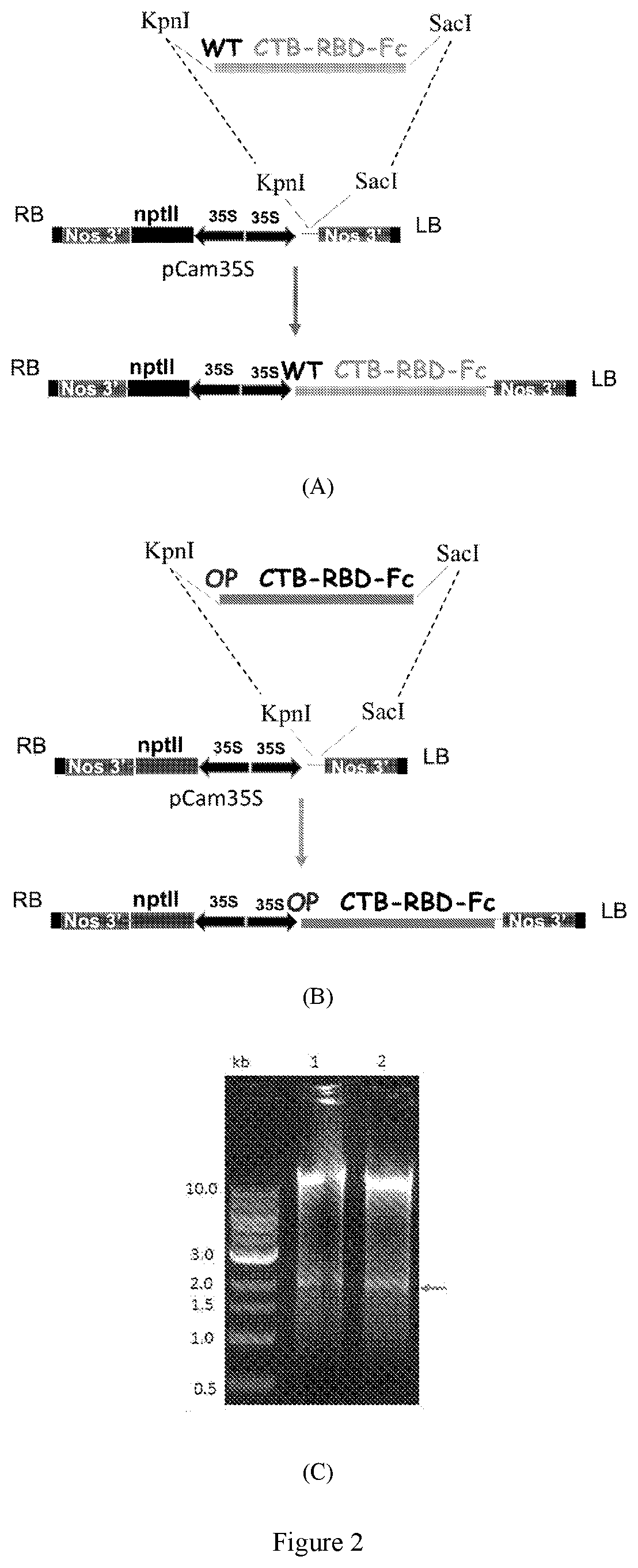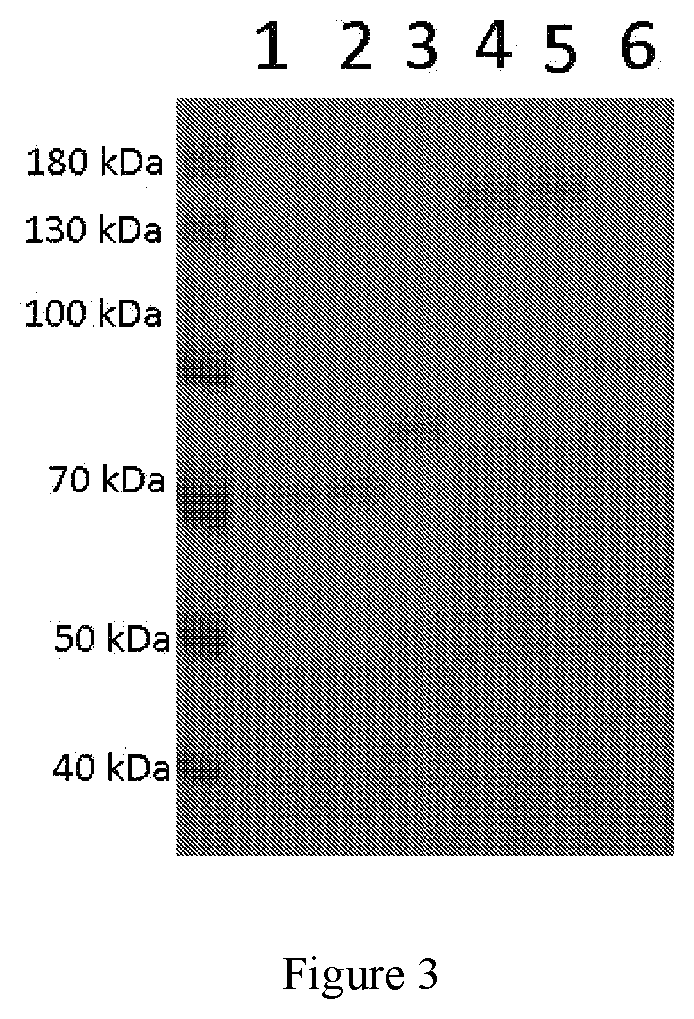Application of plant as host in expressing vaccine of middle east respiratory syndrome
a technology of respiratory syndrome and plant, applied in the field of biotechnology, can solve the problems of mers-cov posing a threat to the public, potential sudden epidemic, public panic, etc., and achieve the effects of reducing biosafety issues, reducing fiber, and high protein levels
- Summary
- Abstract
- Description
- Claims
- Application Information
AI Technical Summary
Benefits of technology
Problems solved by technology
Method used
Image
Examples
example 1
ion of Plant Transient Expression Vector
[0051]To improve expression and translation of proteins in the lettuce system, in the present invention, the codons of CTB-S377-588-Fc were redesigned to preferentially match the codon frequency found in plants (sequences are set forth in SEQ ID NO: 7). The cholera toxin B subunit (CTB) is shown to increase antigen uptake and effectively induce mucosal responses. To improve the immunogenicity of the intranasal vaccine, CTB (Genbank ID: AY475128.1) was fused to RBD (Genbank ID: KM027288.1)-Fc (Genbank ID: BC156864.1). The optimized codons for CTB-5377-588-Fc were designed and synthesized by GeneArt™ GeneOptimizer™ (ThermoFisher).
[0052]KpnI restriction site was added at the 5′ end and the SacI and Pad sites were added at the 3′ end of CTB-5377-588-Fc and the optimized sequence thereof pWT-CTB-RBD-Fc and pOP-CTB-RBD-Fc vectors were generated by ThermoFisher. The gene fragments were obtained by KpnI / SacI digestion and cloned into the binary plant ...
example 3
xtraction and Isolation
[0055]The lettuce sample after agrobacterium vacuum infiltration was stirred with a stirrer and homogenized at a high speed in the extraction buffer (100 mM KPi, pH 7.8; 5 mM EDTA; 10 mM β-mercaptoethanol) at 1:1 ratio for 1 to 2 minutes. The homogenate was adjusted to pH 8.0, filtered through gauze, and the filtrate was centrifuged at 10,000 g at 4° C. for 15 min to remove cell debris. The supernatant was collected, mixed with ammonium sulfate (50%), and incubated on ice for 60 min with shaking, and then was again separated by a centrifuge (10,000 g) at 4° C. for 15 min. The resulting supernatant was subjected to a second round of ammonium citrate (70%) precipitation, sit on ice for 60 min with shaking, and again centrifuged at 10,000 g at 4° C. for 15 min. Then, the supernatant was discarded, and the precipitated protein of the treated sample was dissolved in 5 mL of a buffer (20 mM KPi, pH 7.8; 2 mM EDTA; 10 Mm β-mercaptoethanol) and stored at 4° C. The pur...
example 4
Gel Electrophoresis and Western Blot
[0057]The purified protein extracted from the lettuce after agrobacterium vacuum infiltrated was collected. 5 μL sample was heat-denatured (95° C.), mixed with loading buffer (Biorad, Hercules, Calif., USA), and then subjected to electrophoresis on 4 to 12% Bolt® Bis-Tris Plus SDS-gel (ThermoFisher Scientific, Waltham, Mass., USA). After the completion of electrophoresis, the gel was stained with Coomassie Blue G250 (Biorad) and photographed again.
PUM
| Property | Measurement | Unit |
|---|---|---|
| pH | aaaaa | aaaaa |
| pH | aaaaa | aaaaa |
| growth time | aaaaa | aaaaa |
Abstract
Description
Claims
Application Information
 Login to View More
Login to View More - R&D
- Intellectual Property
- Life Sciences
- Materials
- Tech Scout
- Unparalleled Data Quality
- Higher Quality Content
- 60% Fewer Hallucinations
Browse by: Latest US Patents, China's latest patents, Technical Efficacy Thesaurus, Application Domain, Technology Topic, Popular Technical Reports.
© 2025 PatSnap. All rights reserved.Legal|Privacy policy|Modern Slavery Act Transparency Statement|Sitemap|About US| Contact US: help@patsnap.com



